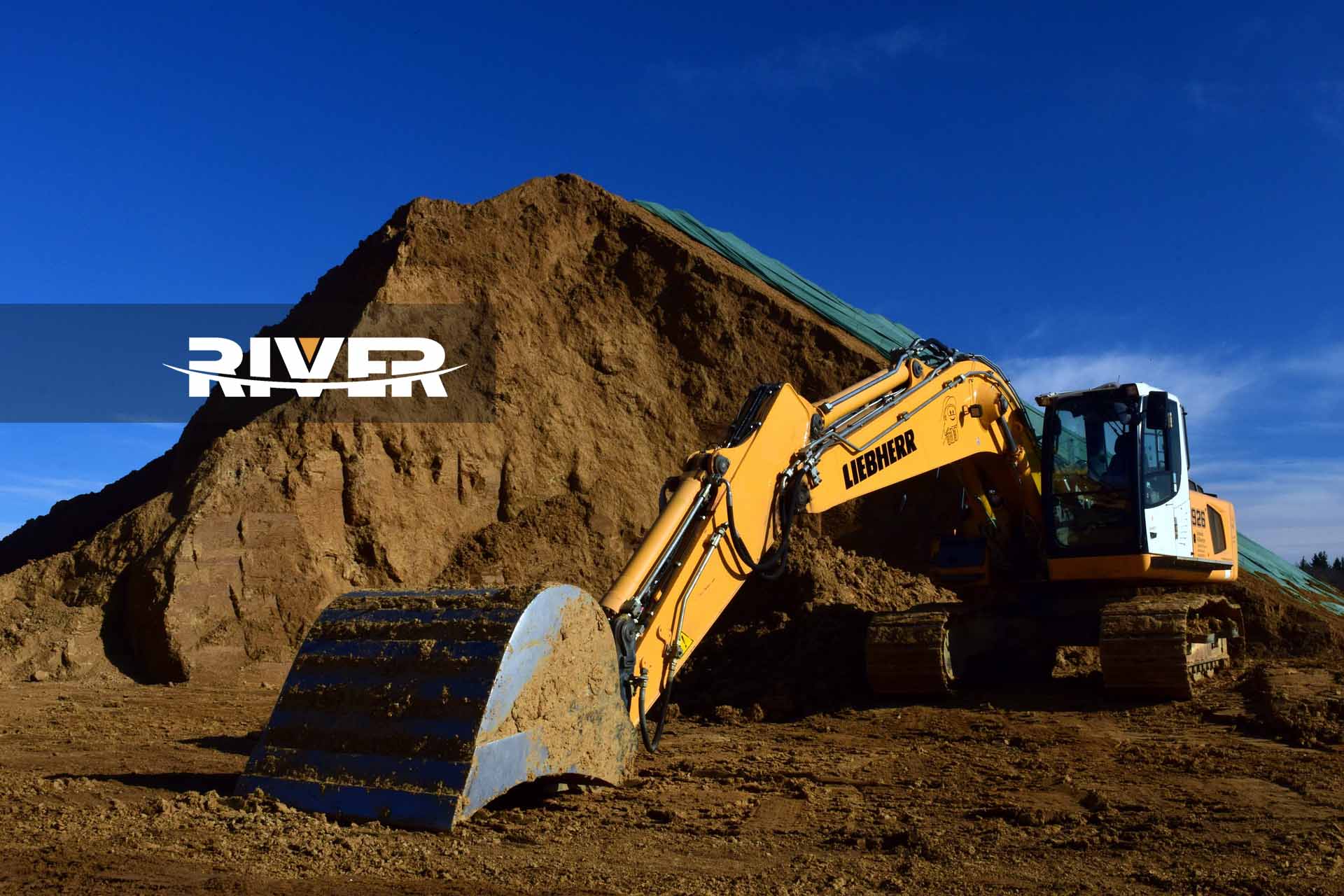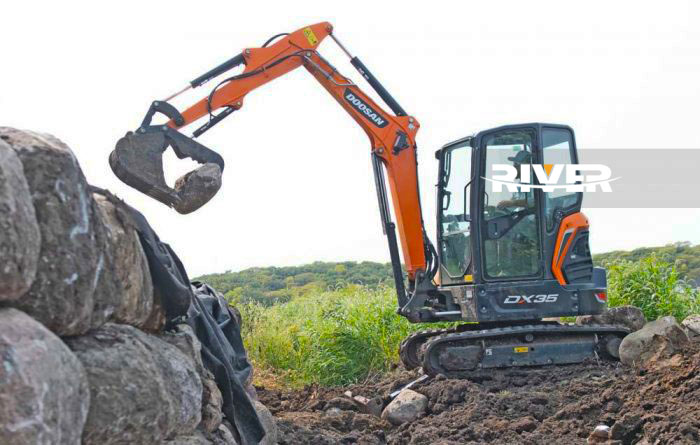Versatile machines designed for wetland and swamp projects, are at the forefront of technological advancements. Staying informed about the latest trends in this sector is crucial for industry stakeholders and decision-makers. The evolution of these excavators impacts various industries, driving demand and reshaping operational landscapes.
Overview of Amphibious Excavator Technology
Definition and Functionality
Amphibious excavators, versatile machines designed for wetland and swamp projects, offer a unique combination of land and water capabilities. These excavators are transforming the way construction projects are approached in challenging environments. Their adaptability to various terrains makes them essential assets for industry professionals seeking efficient solutions.
Key Features
- Versatile operation on both land and water
- Enhanced mobility in wetland and swamp areas
- Eco-friendly design with minimal environmental impact
- Optimal performance in dredging and habitat restoration projects
Types of Amphibious Excavators
- Medium-sized excavators: Dominate the market due to their versatility and efficiency.
- Large-scale excavators: Ideal for heavy-duty applications requiring robust machinery.
- Compact excavators: Suited for smaller-scale projects with limited access areas.
Historical Development
The evolution of amphibious excavators has been marked by continuous innovation to meet the demands of modern construction practices. Early innovations focused on basic functionality, while recent advancements have integrated cutting-edge technologies to enhance operational efficiency.
Early Innovations
- Introduction of amphibious capabilities for challenging terrains.
- Basic hydraulic systems for improved maneuverability.
- Initial adaptations for wetland dredging and restoration projects.
Evolution Over the Years
- Integration of advanced GPS systems for precise navigation.
- Telematics technology enabling remote monitoring and control.
- Implementation of AI-driven solutions for enhanced operational insights.
Market Analysis
Current Market Size and Growth
Key Statistics
- The global amphibious excavators market was valued at approximately USD 7.81 billion in 2024.
- It is projected to reach USD 17.08 billion by 2031, indicating a significant growth rate of 11.8% from 2024 to 2031.
Major Market Players
- Key companies in the amphibious excavator market are actively involved in moderate levels of new product launch activities to stay competitive.
- These major market players are driving innovation and technological advancements within the industry.
Market Segmentation
By Application
- Amphibious excavators are increasingly utilized in challenging wetlands and marshlands during restoration projects.
- The need for these machines is also rising in the construction sector due to their efficiency in various terrains.
By Region
- The global market for amphibious excavators is witnessing substantial growth across different regions.
- A rise in water-borne trading activities in shallow waters is enhancing the demand for these versatile machines.
Key Trends in Amphibious Excavator Technology
Technological Advancements
Automation and AI Integration
Incorporating automation and AI integration into amphibious excavators revolutionizes operational efficiency. The utilization of advanced technologies like GPS, telematics, and remote-control systems enhances precision in navigation and monitoring. These innovations streamline tasks, ensuring optimal performance in challenging environments.
Enhanced Mobility and Versatility
The focus on enhancing mobility and versatility in modern amphibious excavators is paramount. Advanced hydraulic systems enable seamless transitions between land and water operations, improving overall adaptability. Medium-sized excavators, known for their versatility, dominate the market due to their efficient performance across various terrains.
Environmental Considerations
Eco-friendly Designs
The shift towards eco-friendly designs in amphibious excavators underscores a commitment to sustainability. Manufacturers prioritize minimizing environmental impact through efficient fuel consumption and reduced emissions. These eco-conscious designs align with industry trends towards greener practices.
Regulatory Compliance
Adhering to regulatory standards is crucial for the continued success of amphibious excavator technology. Stricter environmental regulations necessitate compliance with emission norms and noise reduction requirements. Manufacturers are investing in research and development to ensure that their products meet evolving regulatory frameworks.
Drivers and Restraints
Market Drivers
Increasing Demand in Construction and Mining
Amphibious excavators play a pivotal role in meeting the rising demand within the construction and mining sectors. Their unique capabilities enable efficient operations in challenging terrains, enhancing productivity and project outcomes. The adaptability of these machines to various environments ensures seamless execution of tasks, making them indispensable assets for industry professionals.
Technological Innovations
Continuous technological advancements drive innovation in the amphibious excavator market. Integrating cutting-edge technologies like GPS, telematics, and remote-control systems enhances operational efficiency and precision. These innovations streamline processes, improve performance, and cater to the evolving needs of modern construction practices. As a result, industry players are constantly pushing boundaries to deliver state-of-the-art solutions.
Market Restraints
High Initial Costs
One of the primary challenges hindering widespread adoption of amphibious excavators is their high initial costs. While these machines offer unparalleled benefits in terms of versatility and efficiency, their substantial upfront investment poses a barrier for many potential buyers. Overcoming this restraint requires strategic financial planning and a long-term perspective to justify the initial expenditure against long-lasting advantages.
Maintenance Challenges
Maintenance requirements present another significant restraint in the utilization of amphibious excavators. Ensuring optimal performance and longevity necessitates regular upkeep, inspections, and servicing. The complexity of these machines demands specialized maintenance procedures that can be time-consuming and costly. Addressing maintenance challenges effectively is crucial to maximizing operational uptime and preserving the value of investments.
Future Outlook
Predicted Market Trends
Emerging Technologies
- The amphibious excavator market is witnessing a surge in emerging technologies that are reshaping the industry landscape. These advancements focus on enhancing operational efficiency and productivity, catering to the evolving needs of construction projects. The introduction of more powerful and efficient machines is driving the development of new and improved models, offering greater productivity across various applications.
Potential Market Expansion
- The potential for market expansion in the amphibious excavator sector is significant, with increased adoption observed in various applications. As industries recognize the advantages of these versatile machines, their utilization is expected to grow exponentially. This expansion aligns with the rising demand for efficient solutions in challenging terrains, positioning amphibious excavators as essential assets for future projects.
Strategic Recommendations
Investment Opportunities
- Industry stakeholders and decision-makers should consider exploring investment opportunities within the amphibious excavator market. With substantial growth projected in this sector, investing in innovative technologies and sustainable practices can yield long-term benefits. Strategic investments in research and development can drive product enhancements and market competitiveness, ensuring a strong position in the evolving industry landscape.
Areas for Innovation
- Identifying areas for innovation within amphibious excavator technology is crucial for staying ahead of market trends. Manufacturers and developers should focus on enhancing machine capabilities, such as improved mobility and environmental sustainability. Innovations that prioritize eco-friendly designs and regulatory compliance will not only meet industry standards but also contribute to a greener future. Continuous innovation is key to meeting the demands of modern construction practices and ensuring operational excellence.
Conclusion
Amphibious Excavators: Revolutionizing construction practices with their adaptability and eco-conscious design, these versatile machines are becoming indispensable in various applications. The projected market growth to USD 14.55 billion by 2030 underscores the increasing demand for these efficient solutions. As governments prioritize infrastructure development and environmental restoration, amphibious excavators will play a vital role in shaping future projects. Embracing technological advancements and sustainable practices is key to staying ahead in the evolving construction landscape.


